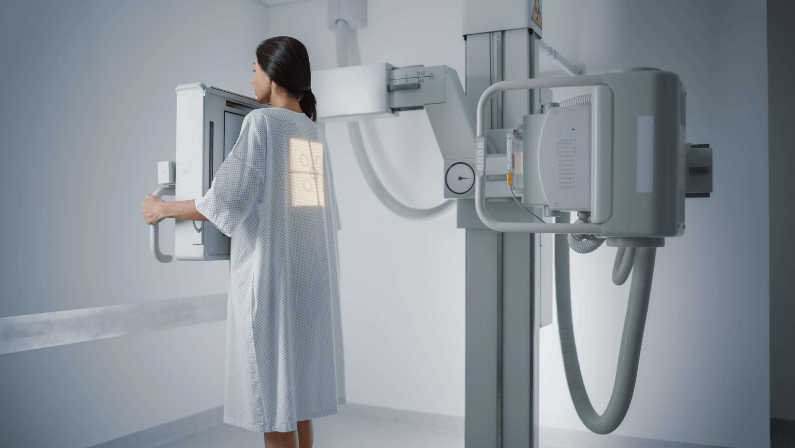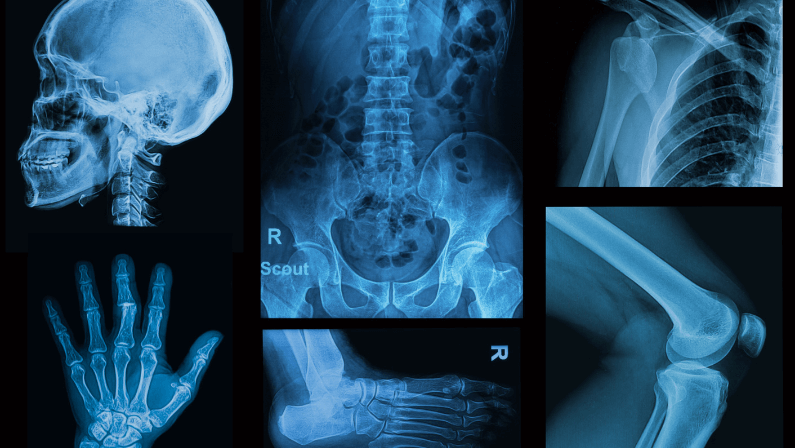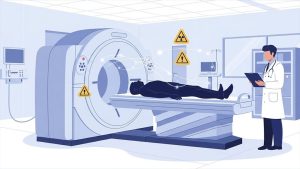X-ray imaging has revolutionized the medical field, allowing doctors to diagnose and treat various conditions effectively.
However, it’s essential to be aware of the safety limits regarding X-ray exposure.
In this blog, we will discuss the number of X-rays that are considered safe in a month, and how they work.
What are X-Rays?
X-rays are a form of electromagnetic radiation, similar to visible light, microwaves, and radio waves. Discovered by Wilhelm Conrad Röntgen in 1895, X-rays have become an indispensable diagnostic tool in modern medicine.

They are primarily used for imaging the internal structures of the body, such as bones, organs, and tissues. X-rays play a crucial role in detecting fractures, infections, tumors, and other abnormalities within the body.
How Do X-Rays work?
X-ray machines generate X-ray beams by bombarding a metal target, usually tungsten, with high-energy electrons.
When the electrons collide with the metal target, they lose energy, producing X-ray photons. These photons then pass through the body, and their varying absorption levels by different tissues create an image.
Denser tissues, such as bones, absorb more X-rays and appear white on the resulting image, while less dense tissues like muscles and organs appear in shades of gray.
X-ray images can be captured on film or digitally, allowing doctors to analyze and diagnose various conditions.

Benefits of X-Rays in Medical Imaging
X-rays have transformed the medical landscape by providing a non-invasive method for examining the body’s internal structures. Some of the key advantages of X-ray imaging include:
- Speed and efficiency: X-ray exams are quick and painless, often taking just a few minutes to complete. This allows doctors to make prompt diagnoses and initiate treatment plans.
- Versatility: X-rays can be used to examine various parts of the body, making them a valuable diagnostic tool for a wide range of conditions.
- Cost-effectiveness: Compared to other imaging techniques, such as MRI and CT scans, X-rays are generally more affordable and accessible.
Some common types of X-ray exams include:
- Chest X-rays: These are used to detect lung infections, tumors, heart conditions, and other chest-related issues.
- Dental X-rays: Dental X-rays are commonly used to diagnose tooth decay, gum disease, and other oral health problems. These X-rays help detect issues that may not be visible during a routine dental examination, allowing for early intervention and treatment. For the best dental care and X-ray services in Cypress TX, , visit Cypress Towne Dental.
- Mammography: This specialized type of X-ray is used to screen for breast cancer and detect abnormalities in breast tissue.
- Bone X-rays: These exams are used to diagnose fractures, dislocations, infections, and other bone-related issues.

Radiation Exposure from X-Rays
While X-rays offer numerous benefits, they also expose patients to ionizing radiation, which can potentially cause harm.
Ionizing radiation has enough energy to remove tightly bound electrons from atoms, creating ions. This process can damage the DNA within cells, increasing the risk of cancer and other health issues.
The amount of radiation exposure during an X-ray exam depends on various factors, such as the type of exam, the patient’s age and size, and the imaging equipment used.
However, it’s important to note that the radiation dose from a single X-ray exam is generally quite low. In fact, the dose from a chest X-ray is roughly equivalent to the amount of natural background radiation a person would be exposed to in 10 days.
Despite the low doses, it’s crucial to minimize unnecessary exposure to ionizing radiation. Doctors and radiologists follow the ALARA (As Low As Reasonably Achievable) principle, which ensures that patients receive the minimum radiation dose necessary to obtain the required diagnostic information.
Factors That Can Influence the Safety of X-Rays
While X-rays are a valuable diagnostic tool, it’s essential to consider the various factors that can influence their safety. By understanding these factors as to how many x rays can you have in a year, patients and healthcare providers can make informed decisions about the necessity and frequency of X-ray exams.
The number and frequency of X-ray exams
The risk of harm from radiation exposure increases with the number of X-ray exams a person undergoes. Frequent exams in a short period may result in a higher cumulative radiation dose, which could potentially increase the risk of cancer or other radiation-related health issues.
The type of X-ray exam
Different types of X-ray exams expose patients to varying levels of radiation. For example, for those wondering about how many dental x rays are safe in a month, dental X-rays generally involve lower doses of radiation compared to CT scans or mammograms. It’s important to consider the radiation dose associated with a specific exam when determining its safety and necessity.
Patient age and health
Younger patients are more susceptible to the potential harmful effects of ionizing radiation, as their cells are rapidly dividing and growing. Additionally, individuals with existing health conditions may be more vulnerable to radiation-related risks. Healthcare providers must take these factors into account when prescribing X-ray exams.
The use of shielding during the exam
Proper shielding can help reduce the radiation dose received during an X-ray exam. Lead aprons, thyroid collars, and other shielding devices can protect sensitive organs and tissues from unnecessary exposure.
How Many X-Rays Are Safe in a Month
There are no specific limits for how often should you get a chest x ray or the number of X-rays a person can safely undergo in a month. Instead, healthcare providers follow the ALARA (As Low As Reasonably Achievable) principle, which aims to minimize radiation exposure while still obtaining the necessary diagnostic information.
Medical professionals weigh the benefits and risks of X-ray exams on a case-by-case basis. They consider the patient’s medical history, the urgency of the diagnosis, and the potential consequences of not performing the exam.
In many cases, the benefits of accurate diagnosis and effective treatment far outweigh the potential risks associated with radiation exposure. However, it’s crucial for patients and healthcare providers to communicate openly and make informed decisions regarding the use of X-ray imaging.
Tips for Reducing X-Ray Exposure
While X-rays are a valuable diagnostic tool, it’s essential to take steps to minimize unnecessary radiation exposure. Here are some tips to help you reduce your exposure to X-rays:
Communicating with your healthcare provider about your X-ray history
Keep track of your previous X-ray exams and share this information with your healthcare provider. This will help them make informed decisions about the necessity of additional exams and avoid repetitive or unnecessary imaging.
Requesting alternative imaging methods when appropriate
In some cases, alternative imaging methods, such as ultrasound or MRI, can provide the necessary diagnostic information without exposing you to ionizing radiation. Discuss these options with your healthcare provider when appropriate.
Ensuring proper shielding is used during the exam
Make sure that proper shielding, such as lead aprons and thyroid collars, is used during your X-ray exam to protect sensitive organs and tissues from unnecessary radiation exposure.
Choosing accredited facilities that follow radiation safety guidelines
Select facilities that are accredited by recognized organizations and adhere to strict radiation safety guidelines. These facilities are more likely to follow the ALARA principle and use up-to-date equipment to minimize radiation exposure.
A Vital Tool For Diagnosis

X-ray imaging is a critical diagnostic tool that has revolutionized modern medicine. By understanding the safety limits of X-ray exposure and following the tips mentioned above, you can protect yourself and your loved ones from unnecessary radiation risks.
One Step Diagnostic is a trusted facility that follows strict radiation safety guidelines, ensuring the highest level of care for our patients.
You can find our locations at Kirkwood, Red Oak, Katy Freeway, Sugar Land, Fallbrook, Bay Colony, and Woodlands, Texas. We are committed to providing accurate and efficient diagnostic services while prioritizing patient safety. Contact us today!




